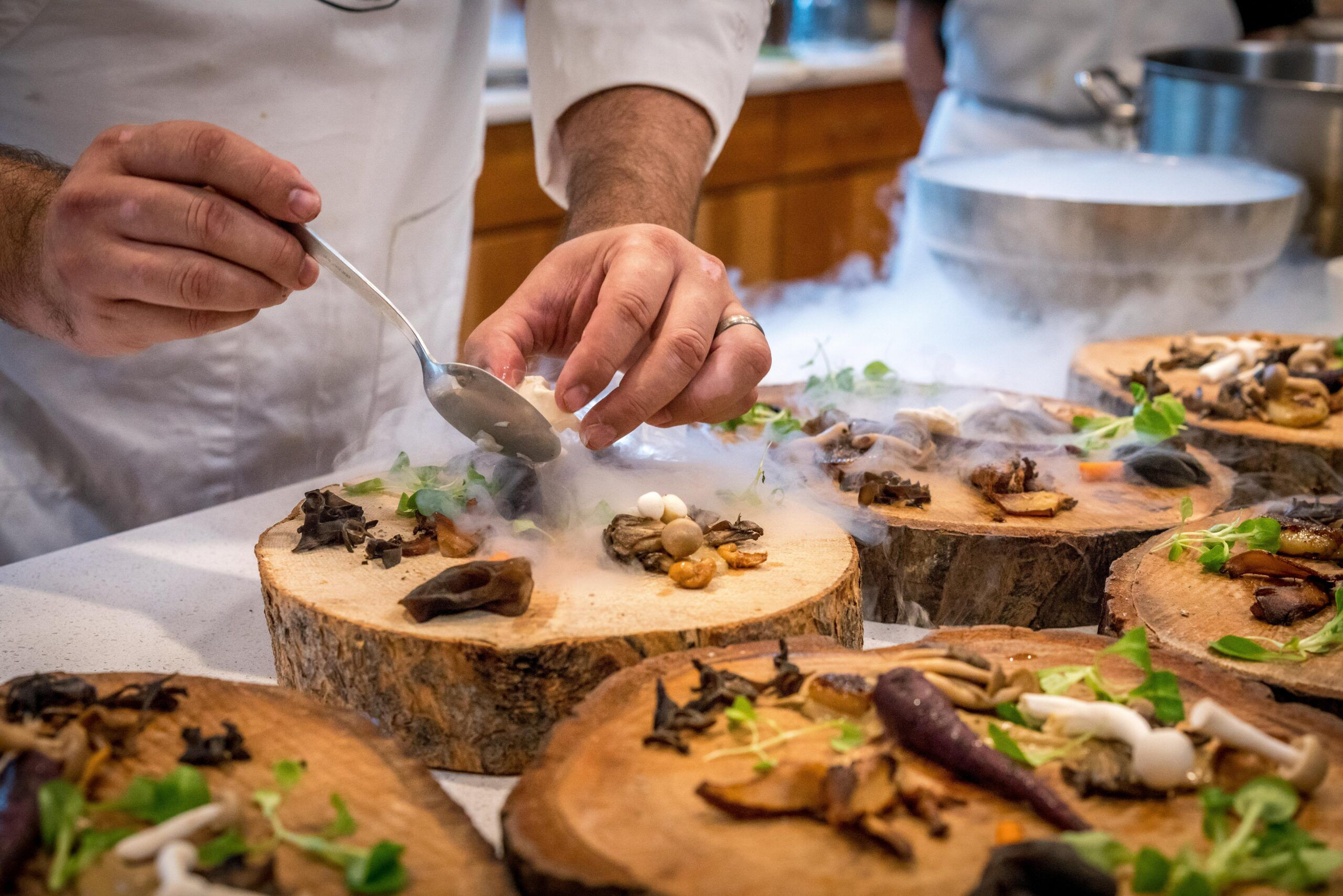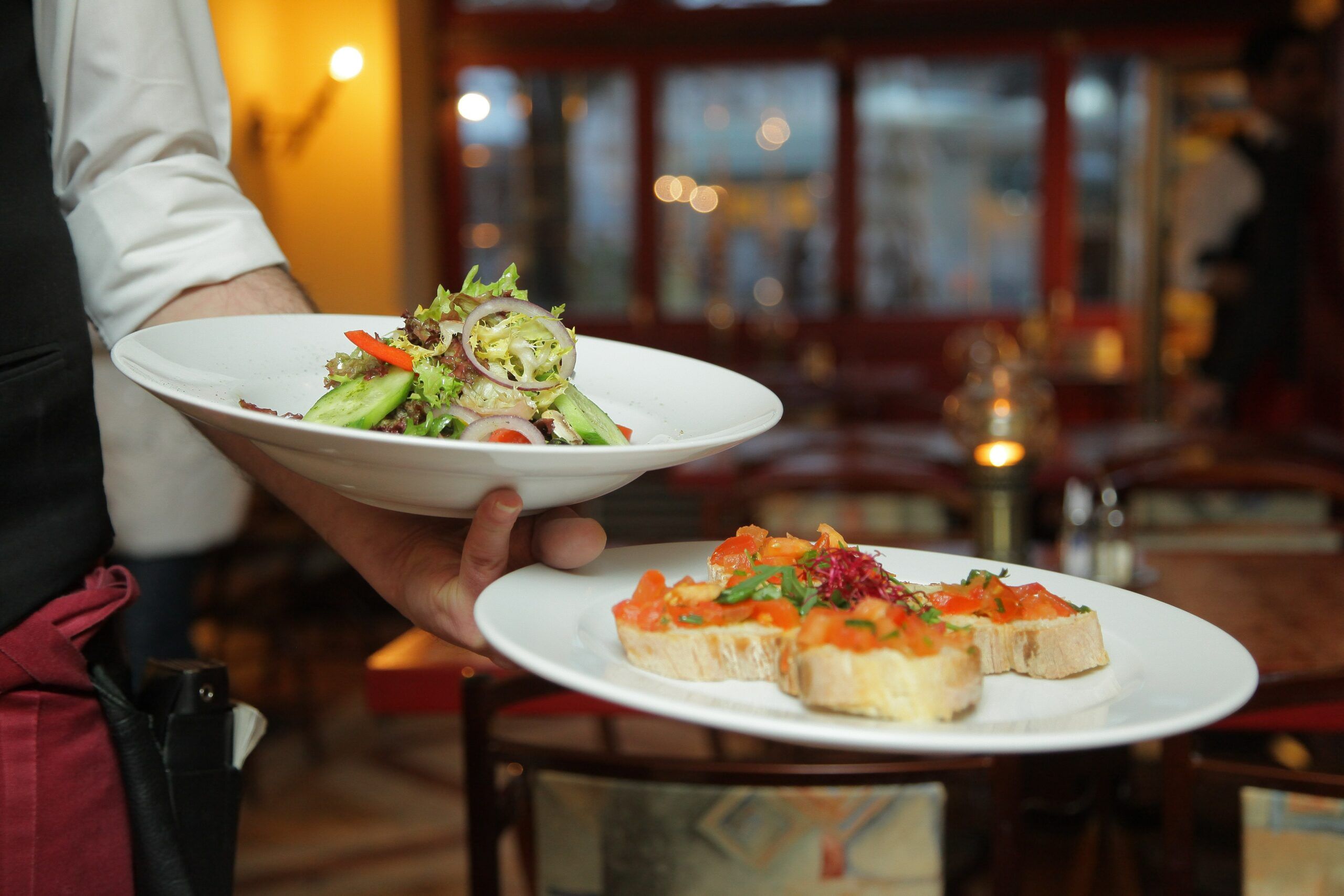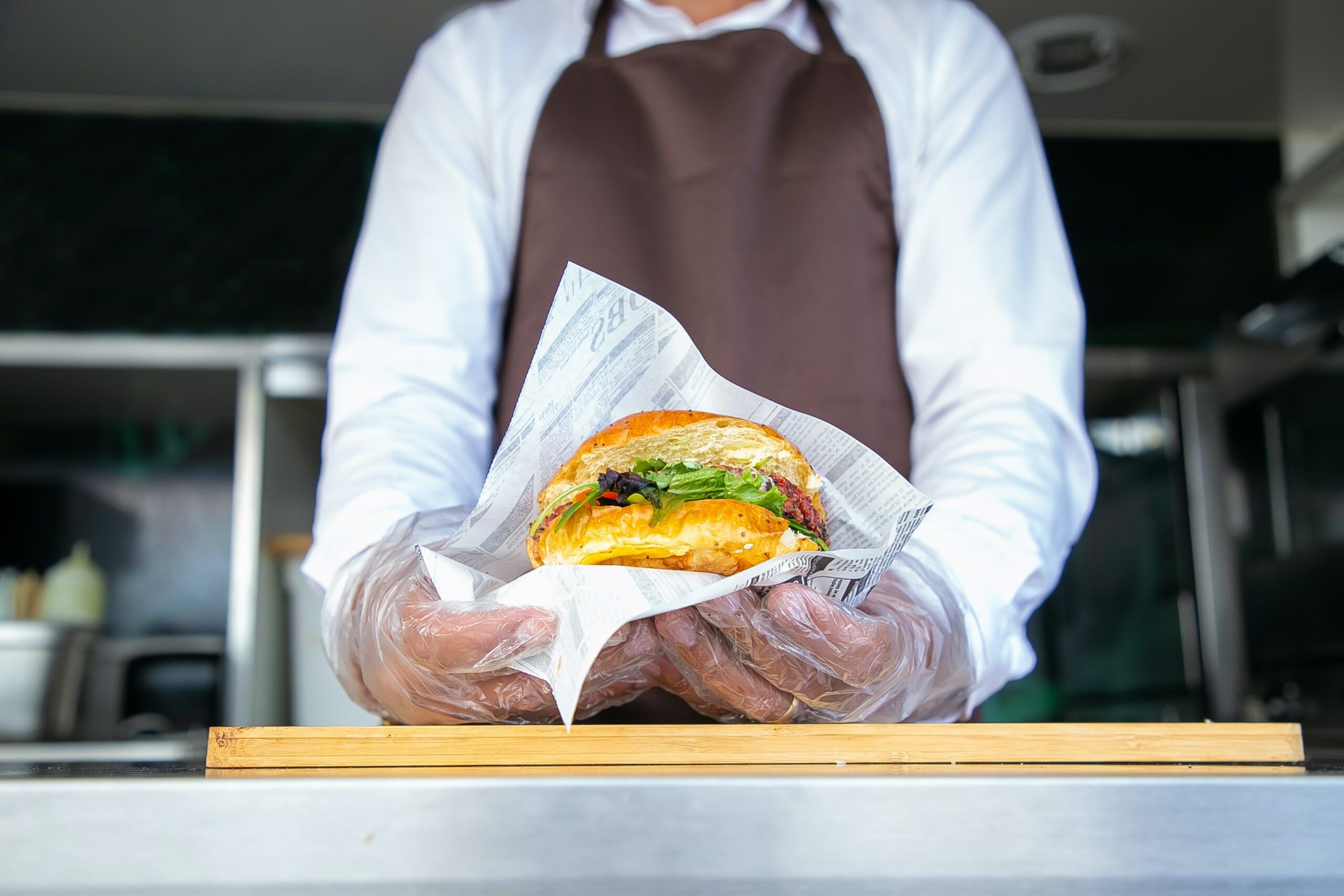- What is a Restaurant Chain?
- How Do Chain Restaurants Differ from Independent Restaurants?
- 7 Ways to Succeed as an Independent Restaurant Owner Against a Large Chain
Starting a business is an exciting and rewarding experience. However, in certain industries, such as the restaurant industry, you may face a challenge: competing with a large chain restaurant that has more capital to spend on marketing and advertising than your small business.
And in today’s marketing landscape, where people are increasingly relying on the internet to find information about products and services, a large chain restaurant can have an advantage over smaller restaurants when it comes to online marketing.
However, this doesn’t mean that independent restaurant owners should give up hope or resign themselves to losing potential customers to the big chains. Definitely not!
With a bit of creativity and a strategic marketing plan, independent restaurants can still attract plenty of customers – even in the face of stiff competition from big chains.
In this article, we’ll discuss seven strategies that independent restaurant owners can use to compete with the big guys on an equal footing.
So, without further ado, let’s get started!
What is a Restaurant Chain?
A restaurant chain, also known as a franchise, is a group of restaurants under the same ownership and brand.
Typically, these restaurants are all owned and operated by the same company, which uses a standardized business model to ensure that each location provides customers with similar products and services.
Among the most well-known restaurant chains in the world are fast food giants like McDonald’s, Burger King, and KFC, as well as casual dining chains like Olive Garden and Applebee’s.
Restaurant chains are extremely popular in today’s food industry, as they offer customers a wide variety of food options while also providing streamlined operations and standardized processes.
In addition, the larger size and scale of these companies help them to leverage economies of scale, resulting in lower costs for consumers.
While there may be some variation among individual locations, most restaurant chains strive to maintain consistency across their entire brand so that customers know what to expect.
So, if you’re looking for great food at a reasonable price, it’s hard to beat the convenience and variety offered by a restaurant chain!
How Do Chain Restaurants Differ from Independent Restaurants?
Chain restaurants are popular in today’s fast-paced world, offering consumers convenient and affordable options for dining.
While the basic concept behind chain restaurants is similar to that of independent restaurants, there are some key differences between the two types of establishments.
Let’s take a look at seven of the most important ways in which chain restaurants differ from independent ones.
1. Menu offerings

Chain restaurants typically offer larger menus and more options than independent restaurants. This is because chain restaurants often try to provide something for everyone to appeal to a wide range of customers.
In contrast, independent restaurants usually specialize in one or two specific cuisine types, making it easier for them to focus on quality rather than quantity.
2. Food preparation

Chain restaurants are often larger in size than independent restaurants and have more employees, which can result in less-personalized food preparation.
For example, some chain restaurants serve frozen foods that are reheated on-site rather than freshly prepared each day.
Independent restaurants, on the other hand, may take greater care when preparing meals so as to ensure quality and consistency.
3. Customer service

Because chain restaurants tend to have more employees than independent restaurants, customers can often enjoy a higher level of customer service at these establishments.
For example, many chain restaurants offer table service in addition to traditional counter or takeout options, allowing customers to enjoy their meals in the restaurant rather than taking them away with them.
4. Price

Chain restaurants typically have lower prices than independent restaurants due to their large sizes, economies of scale, and ability to negotiate bulk purchases. As a result, chain restaurants are often more accessible for young people or those on a budget.
However, independent restaurants may offer higher-quality ingredients or cooking methods that justify their slightly higher price tags.
5. Atmosphere

Chain restaurants typically have a standardized atmosphere that is designed to appeal to the masses. This might include things like flashy decor, loud music, or fast-paced service in order to create an energetic and exciting vibe.
In contrast, independent restaurants often offer more intimate settings with unique design elements that reflect the vision of their owners or chefs.
Ultimately, the type of atmosphere that appeals to you will depend on your personal preferences.
6. Location

Location is another key difference between chain and independent restaurants. Chain restaurants tend to be located in more centralized, high-traffic areas that are easily accessible by foot, car, or public transportation.
Independent restaurants, on the other hand, may be located off the beaten path and require a bit more effort to reach.
7. Branding
Finally, chain restaurants often have a strong brand presence thanks to their large marketing budgets and national advertising campaigns.
This can make it easier for customers to identify these establishments and choose them over other options.
Independent restaurants, on the other hand, may not benefit from as much marketing support and therefore have to work harder to build up their own brands and loyal customer bases.
Your Inbox, Your Rules!
Tailor your newsletter with the topics you're most interested in.
7 Ways to Succeed as an Independent Restaurant Owner Against a Large Chain
Restaurant chains typically offer standardized menus and prices so that customers at different locations have a similar experience.
Additionally, chains often spend millions of dollars on marketing and advertising each year, which gives them a significant advantage over smaller independent restaurants.
Despite this competitive edge, however, independent restaurants can still thrive in today’s business environment. With some creative thinking and strategic marketing efforts, they can successfully compete with the big chain restaurants for customers’ attention and business. Here are 7 great ways to do just that:
1. Focus on creating a great customer experience
One of the main reasons why people dine at chain restaurants is because they know what to expect – and, in many cases, this includes having a positive dining experience.
As an independent restaurant owner, your goal should be to create a similar level of consistency that customers expect from big restaurant chains.
This means putting a lot of effort into things like your restaurant’s interior design, the quality and taste of your food, and your service standards.
Create an engaging atmosphere that encourages diners to stay longer, enjoy their meals, and return often. And be sure to actively listen to your customers and respond to their feedback so that you can continually improve your business.
2. Work on building a strong online presence
In today’s digital age, having a strong social media presence is more important than ever when it comes to competing with big chain restaurants.
Large chain restaurants typically have bigger budgets for marketing and advertising, including digital marketing efforts like search engine optimization (SEO) and pay-per-click advertising (PPC).
So as an independent restaurant owner, it’s essential that you focus on growing your online presence through digital marketing.
Start by optimizing your website for search engines and creating quality content that is relevant to your target audience.
You should also try to build up a large following on platforms like Facebook and Instagram that are popular among your target audience – and regularly post high-quality photos and videos of your food, along with updates about promotions and events.
Furthermore, cultivating positive reviews on sites like Yelp can help to boost your credibility and drive more customers to your restaurant.
By engaging with customers online and quickly responding to any questions or comments, you can build a strong brand that stands out from the crowd.
3. Focus on offering unique menu items or special promotions
To stand out from the competition, it’s important that your restaurant offers something unique and compelling – whether that’s by creating specialty menu items with locally-sourced ingredients or by running regular promotions and specials that aren’t offered at other restaurants in your area.
Be sure to promote these unique offerings online and through other marketing channels so that potential customers know about them and are more likely to choose your restaurant over a chain.
Try to examine the menus of your local competitors, and see if there are any gaps that you could fill with your own offerings.
4. Team up with other independent restaurant owners in your area
If you’re competing with a large chain restaurant that has multiple locations throughout the city, you may want to consider teaming up with other independent restaurant owners in your area.
Try to find other restaurants that offer similar menus or types of cuisine, and see if you can come up with ways to collaborate on marketing efforts – for example, by promoting a “dine-around” event where diners can visit participating restaurants in one night.
This will allow you to pool your resources and reach more potential customers while strengthening your position in the local restaurant scene.
5. Invest in quality ingredients and equipment
It’s no secret that big chain restaurants have the budgets to invest heavily in high-quality ingredients and state-of-the-art kitchen equipment – which gives them an edge when it comes to creating delicious, consistent food.
As an independent restaurant owner, you’ll need to make a similar investment in your restaurant if you want to compete with the big chains.
This means sourcing premium ingredients and investing in quality cooking equipment that can help you prepare foods more consistently and efficiently.
So be willing to spend some extra time shopping around for the best suppliers, and think carefully about how you will use each piece of equipment in your kitchen.
With a focus on quality and consistency, you can create an experience that’s sure to keep customers coming back for more.
6. Listen to customer feedback and respond to it quickly
One of the most important things you may do as a restaurant owner is to listen closely to your customers and address any issues or concerns that they may have.
Try to set up an online system where customers can easily leave feedback about their experience at your restaurant, such as through a customer survey or on social media.
By quickly responding to and addressing any negative feedback, you can show that you care about your customers’ experience – and also make it clear that you’re committed to delivering high-quality service.
7. Stay up-to-date on industry trends and changes
As with any business, it’s important to stay on top of industry trends and changes in order to keep your restaurant competitive.
For example, you may want to consider offering special menus or promotions based on seasonal ingredients or major events – such as a “carnival menu” during the annual state fair or a summer cocktail special to attract customers on hot days.
You also need to keep an eye out for new technology or emerging food trends, whether it’s new cooking methods or innovative menu items that are catching on with customers.
By continuously assessing your restaurant and its offerings, you will be able to stay ahead of the competition and continue providing the best experience for your customers.
Don’t be Afraid to Take Risks
As an independent restaurant owner, you’ll have the freedom to take risks and try out new ideas that might not be possible in a large chain.
With the help of Orders.co, which is specialized in restaurant online orders management, you can create and manage an innovative menu with ease.
So do not be afraid to push the envelope and try something new – you may discover a whole new way of doing things or come up with a unique offering that really sets your restaurant apart from the rest!



